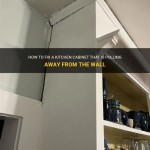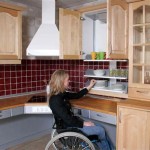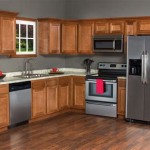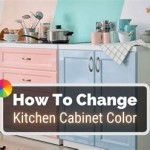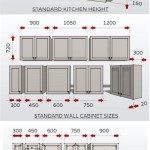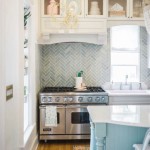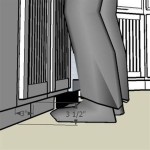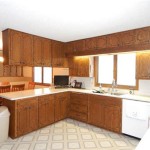How to Use Contact Paper on Kitchen Cabinets: A Step-by-Step Guide
Contact paper, or self-adhesive vinyl, is a versatile and affordable way to update your kitchen cabinets without replacing them. With a little patience and attention to detail, you can achieve a professional-looking finish that will last for years to come. Here is a comprehensive guide on how to use contact paper on kitchen cabinets:
Materials you will need:
- Contact paper
- Measuring tape
- Pencil or fabric marker
- Scissors or utility knife
- Squeegee or credit card
- Hairdryer (optional)
Step 1: Preparation
Thoroughly clean the surfaces of your cabinets to remove any grease or dirt. This will ensure that the contact paper adheres properly. Use a degreaser or rubbing alcohol for best results.
Step 2: Measure and Cut
Measure the surfaces of your cabinets and cut the contact paper to size using a measuring tape, pencil, and scissors or a utility knife. It's a good idea to leave an extra inch or two on each side for trimming later.
Step 3: Peel and Apply
Peel back a small portion of the contact paper backing and carefully align it with the edge of the cabinet surface. Use a squeegee or a credit card to smooth out the contact paper as you peel away the backing and apply it to the surface. Work your way from the center outward to avoid wrinkles or bubbles.
Step 4: Trim the Edges
Once the contact paper is applied, use a utility knife or scissors to trim any excess material around the edges. Take your time and use a sharp blade to ensure clean cuts.
Step 5: Use a Hairdryer (Optional)
For a more durable finish, you can apply heat to the contact paper using a hairdryer on a low setting. This will help to activate the adhesive and create a stronger bond. Hold the hairdryer about 6 inches away from the surface and move it back and forth until the contact paper is warm to the touch.
Step 6: Remove Bubbles
If you encounter any bubbles during the application process, you can use a needle or the tip of a knife to gently puncture them. Then, use your squeegee or credit card to smooth out the area and remove the air.
Step 7: Final Touches
Once the contact paper is completely applied, inspect your work and make any necessary adjustments. You can use a damp cloth to wipe away any smudges or fingerprints. Avoid using harsh cleaners or abrasives as they can damage the contact paper.
Tips for Success
- Use a sharp blade to cut the contact paper cleanly.
- Work in a well-lit area to ensure accuracy.
- Take your time and don't rush the process.
- If you make a mistake, don't panic. You can carefully peel back the contact paper and reapply it.
- Use a hairdryer on a low setting to help activate the adhesive and remove bubbles.

When Your Landlord Says Paint Is Out Of The Question Try Contact Paper For Cabinets Domino

Kitchen Cabinet Contact Paper Update Kelly Leigh Creates

Contact Paper Kitchen Update Part 2 Countertop Roaming Home

I Used Contact Paper On My Whole Kitchen Makeover And Al S Part 2

Diy Contact Paper Kitchen Update Part 1 Cabinets Roaming Home

The Best Contact Paper For Kitchen Cabinets Hunker

Diy Countertop Cabinet With Only Contact Paper

Contact Paper In The Kitchen 5 Places B4 And Afters

Diy Contact Paper Kitchen Counters The Interior Diyer

Diy Contact Paper Kitchen Update Part 1 Cabinets Roaming Home
Related Posts

